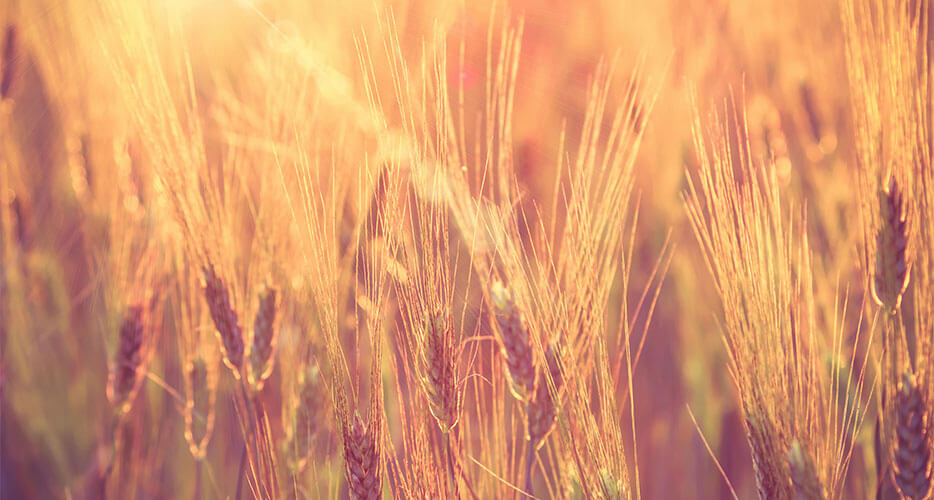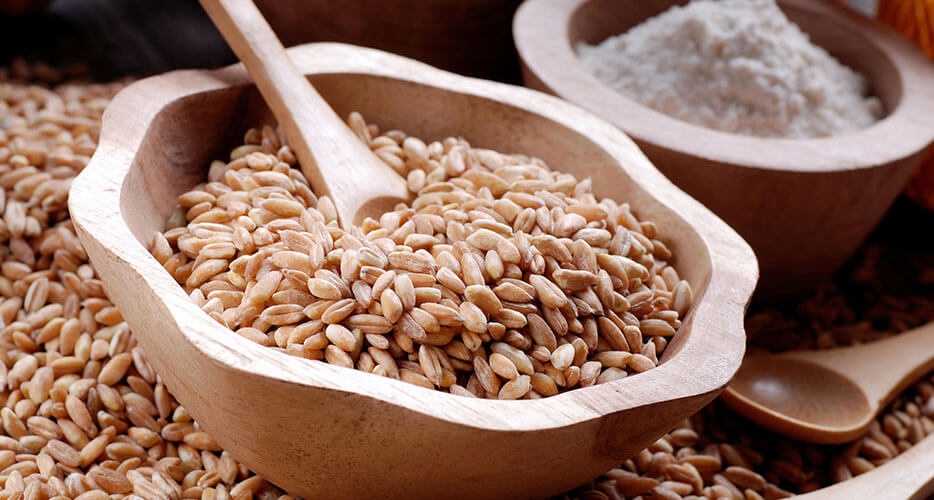
Senatore Cappelli, Timilia, Perciasacchi, Gentil Rosso, Verna: these are just some of the names of the most famous varieties of "ancient grains" that have recently reappeared in the panorama of bread-making and milling.
Misura's interview with Dr. Andrea Del Seppia
Let's talk about the topic with our nutritionist, Dr. Andrea Del Seppia.
Dr. Del Seppia, let's talk about ancient cereals...
The term "ancient grains" is used to distinguish them from the more modern ones, which have been obtained with the aid of artificial selection techniques, used since the early decades of the twentieth century to try to obtain varieties of crops with a more yield high. Since agriculture has existed, man has always made a selection on his crops to choose the best ones, but between the twenties and forties of the last century, we have witnessed an intensification of the use of hybridisations and genetic crosses which have given rise, after decades of experimentation, to the wheat and durum wheat we consume today. The ancient grains - even if there is no well-defined agronomic definition - are those that were consumed before these selections were made massively.
What are their characteristics and why should we introduce them into our diet?
These cereals have a higher stem than modern wheat: a longer stem puts them more at risk of being damaged by the weather and determines a lower yield. Although they have a higher cost due to their lower yield, ancient varieties express greater biodiversity, unlike modern grains which are very standardized in their characteristics and flavor. This is precisely the first reason why it would be important to introduce into your diet some derivatives obtained from wheat flour other than the most common ones: the variety of food choices is the basis of a balanced diet and preserving biodiversity is advantageous not only for us but also for the environment that hosts us.
These cereals could be more suitable than the modern ones to grow in certain climatic conditions, even in places where, for practical reasons, intensive and mechanized agriculture is not feasible. Furthermore, buying grains typical of your area helps to reduce the food supply chain: a short chain, with few steps between the producer and the consumer, determines a lower environmental impact; moreover, non-intensive cultivation methods result in less pollution to the soil and groundwater. The ancient grains do not grow in intensive cultivation and therefore do not imply the equally “intensive” (albeit according to the law) use of nitrogenous fertilizers and pesticides: consequently, sometimes replace the modern wheat starchy foods with those of older grains helps reduce the food intake of xenobiotics, or foreign substances compared to those that normally make up food.
And from a nutritional point of view?
From a nutritional point of view, the old varieties would seem to be more digestible and less inflammatory than the more widespread ones, particularly in the case of more sensitive intestinal subjects; however, more solid scientific studies are needed to be able to state this with more certainty. As far as gluten content is concerned, the results in the scientific literature are controversial: what we do know is that they contain this protein in quantities comparable to those of the more recent selection colleagues, but the glutinous network is qualitatively different than the one formed when working modern flours.

What, in particular, are ancient cereals?
The most cultivated wheat of ancient origin is represented by the monococcum spelled (Triticum monococcum): consumed in the Middle East about ten thousand years ago, it was the first of the Poaceae family (Gramineae) to be the object of domestication: it is not, therefore, of a wild species. It is characterized by small ears containing a single grain; in more modern times its role as a food source has become increasingly marginal to make room for other cereals. One of these is the spelled dicocco (i), which has an ear with two grains.
The dicocco was also one of the first Poaceae of agricultural interest and is still consumed (it is commonly called spelled, whose wholemeal flour gives rise to products with an excellent fiber content). Subsequently, the genome of the spelled crab merged with that of another wild grass and originated spelled (Triticum spelta), very similar to the current soft wheat (Triticum aestivum), which was born, instead, from hybridization of a type of durum wheat (Triticum durum) with another wild species. Currently, durum wheat is used to make semolina used, for example, in the production of pasta and some bakery products (Cappelli is really a variety of durum wheat), whereas soft wheat flour is mainly used for common products from oven.
What changes in your lifestyle can help intestinal health?
In conclusion, the varieties we consume have been chosen to deal with the problems of hunger or lack of self-sufficiency; in present times, where it is more salient to deal with the quality of one's diet (since we have no problem finding food), it may be useful to introduce some older and “alternative” varieties, rewarding the work of small producers who pay attention to whole working process. It is therefore not only a matter of raw material but also, for example, of the way in which the flour is ground and how the semolina pasta is dried. Using different grains means having the possibility of giving different fragrances to our dough: these are organoleptic peculiarities that can distinguish many foods at the base of our diet.
Read the article on Misura® website
Read the article on Misura® Facebook official page
Link to Dr. Andrea Del Seppia page on the official Misura® website
Misura® is a registered trademark of Colussi S.p.A. The material reported in this article is the property of Colussi, who authorized its publication.